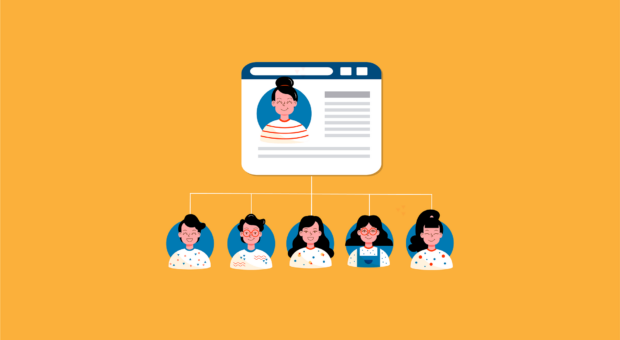
The Age of the Customer
Back in 2013, Forrester Research, a leading market research and business advisory firm, dubbed the 2010s and beyond “The Age of the Customer,” and it’s no surprise why. As modern marketers, we all live this focus on customer needs, sentiment, and behavior nearly every day, and we truly understand how much power customers have over the success of a brand, especially in today’s hyper-digital world. On the other side, digital marketing analytics also allow marketers to learn more about our customers than we ever have before, and to truly drill into their key needs and common behaviors. One of the best tools we have to contextualize and leverage all this information about our customers is a customer journey map. (Note: if you’re new to journey mapping or the VONT blog, be sure to check out this comprehensive guide to customer journey mapping before continuing on with this article).
In this article, we’ll take you beyond the journey mapping fundamentals to explore how you can leverage your journey maps to keep your business competitive in complex or saturated markets.
It’s All About the Journey…and the Destination
Today, customers find, learn about, and interact with brands across multiple channels and platforms. This also gives them plenty of opportunity to share their experiences with other current or potential customers. While this can be extremely helpful for building a brand’s solid reputation and growing awareness, it also means that it’s easier for customers to share negative experiences when they feel their customer journey was bumpy or that it didn’t meet their needs.
Brands that are the most successful at building a glowing rapport with their customers spend a lot (and we mean a lot) of time obsessing over them. Who are they? What makes them tick? What makes their needs unique? How do today’s brands meet those needs? What journey should we send them on to support and guide them towards becoming (and staying) a customer? There’s a lot to unpack there. To make things more complex, there’s likely to be at least one other – if not several other – brands vying for your customers’ attention.
The key to being competitive in a saturated landscape by capturing potential customers’ attention involves a mixture of several different types of research, and a clear bridge between the takeaways from your research and how you’ll go about executing a plan that addresses those key takeaways. Customer journey maps are a great tool for building that bridge because they actually go beyond marketing to investigate what’s at the strategic core of your business. Here’s how:
Current Customer Journey Mapping for a Deeper Understanding of Your Strategic Position
It can be easy for businesses to lose sight of their competitive landscape because they develop a firm and sometimes myopic vision of who their customers are without frequent and thorough evaluation of their competitive situation. Many businesses evaluate their competitive space and their customer-base (and therefore their overall strategic position) too infrequently or superficially, particularly in industries that experience rapid change.
Customer journey maps that examine your current customer journey can help you explore your positioning and determine if it’s still relevant by taking a detailed look at every interaction your customers have with your business. They will show you what touchpoints are more or less successful, or if you’re losing a large percentage of your current prospects at a particular stage of their journey, which can then give you deeper insight into the causes of any issues.
For a very simple example, say you create a journey map for your business that deals in hair care products for curly hair. In your evaluation of the journey, you see that you are successfully building brand awareness and generating high numbers of website visitors through your social media posts and advertising campaigns, but then you notice that a proportion of your customers hit your products page and suddenly drop off.
If you’ve created your journey map correctly, you should be aware of your competition and have at least a basic idea of their business model, and of what tactics they are using to build awareness and nurture their leads to conversion. You should also have a very robust understanding of what features your customers are looking for in their curly hair-care products and what their buying habits are. So, when you find an issue in your customer journey (such as traffic drop-offs) you can start to probe into several different causes and solutions.
Maybe it’s something as simple as a broken link that needs to be fixed in order to get your prospects back on their journey, or maybe your product description isn’t clear enough to answer your audience’s most important questions. Or, maybe the issue is something much deeper that requires you to reevaluate your product, like an issue with an ingredient that doesn’t meet clean beauty or sustainability standards. The point is, while your journey map is essential for laying out your marketing strategy, it will help clue you into any issues that may require you to reexamine your products’ or services’ positions in your market and come up with a solution that meets your customers’ high expectations for your brand.
Ideal Customer Journey Mapping for Customer Experience
While current customer journey maps help you understand the pros and cons of your current journey, ideal journey maps (or a visual representation of your ideal or perfect customer journey) can help you leverage all the knowledge you already have about your competitive landscape and your customers’ needs. Ultimately, ideal journey maps show you how to improve upon your current journey and make it one that puts the customer at the center of your brand universe and helps them feel empowered in their decision-making.
vIdeal journey maps serve as a guide to what tactics to use throughout the journey and when so that you have more control over the customer experience and can create a more structured strategy to bring your customers down the marketing funnel from awareness to decision and loyalty seamlessly. Knowledge is power, and it’s essential to use your knowledge about your customers and how your brand relates to them to create an experience that is uniquely tailored to their needs. And, the better your customer journey – the more it gets to the heart of what your customers truly want – the more competitive advantage you have within your niche.
The Takeaway
Yes, current and ideal customer journey maps can take time to put together, but their benefits as tools for both marketing planning and broader strategic planning are myriad and totally worth the effort. Think about it this way: since this is the “age of the customer,” shouldn’t you be placing them at the center of your business and your brand? We certainly think that learning as much as possible about them, exploring their relationships with both you and your competitors, and using that knowledge to create a truly customer-obsessed experience is the key to making sure your business stands out in a crowded space.
About VONT Performance Digital Marketing
At VONT we believe that change is the only constant in the digital world – and that excites us. When tools and environments are constantly changing, new opportunities to help our clients achieve success are constantly arising. Each new advertising technology, social platform, or design approach allows us to improve on the results we achieve for our clients.
We believe in this idea of continual fine-tuning so much that we named our company VONT, which means to achieve exponential improvement in incremental steps. It is our core belief, and the reason why we are not simply a web design company or simply a digital advertising agency, but rather a long-term, single source partner providing a comprehensive array of web development and digital marketing capabilities.


